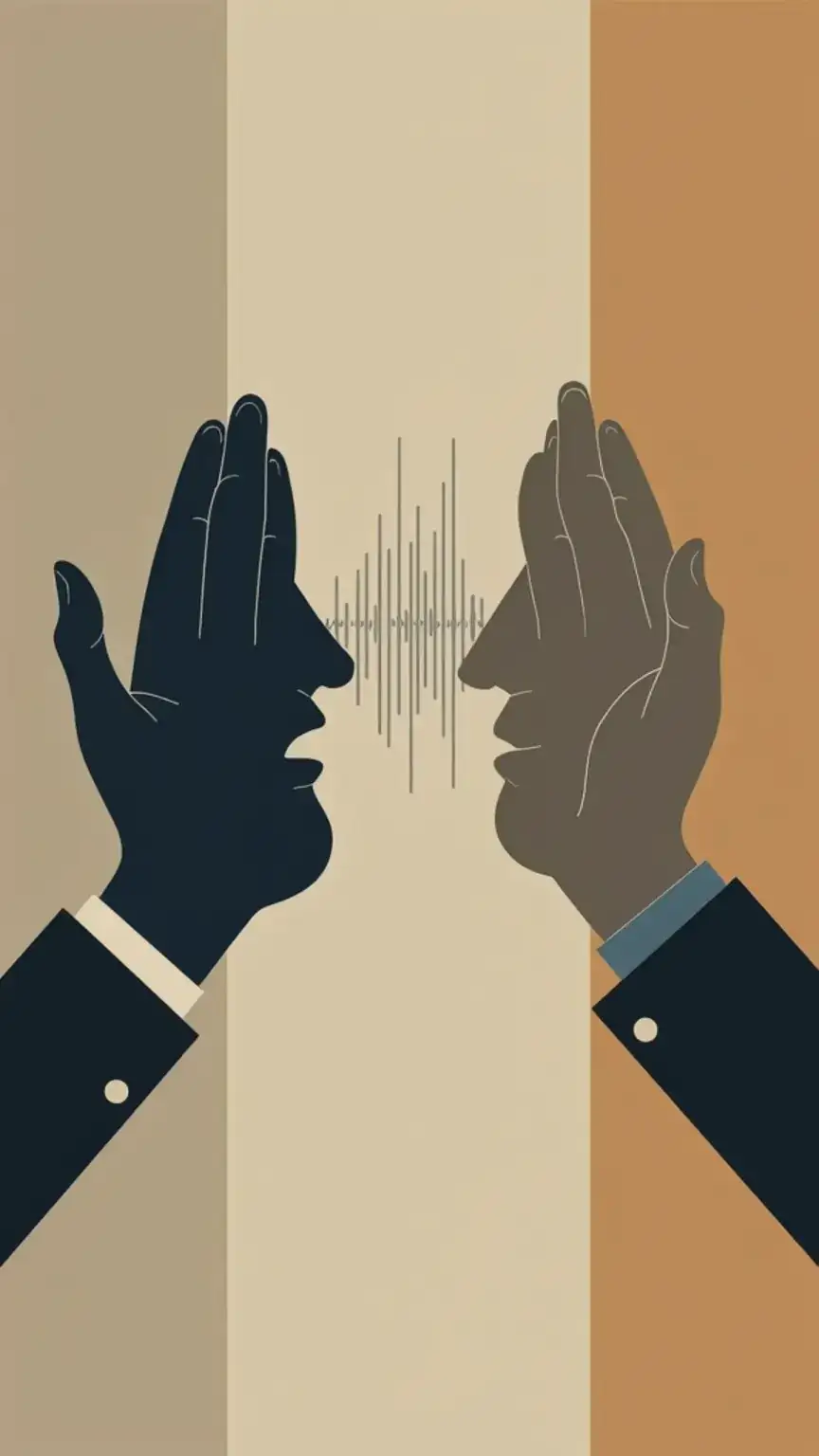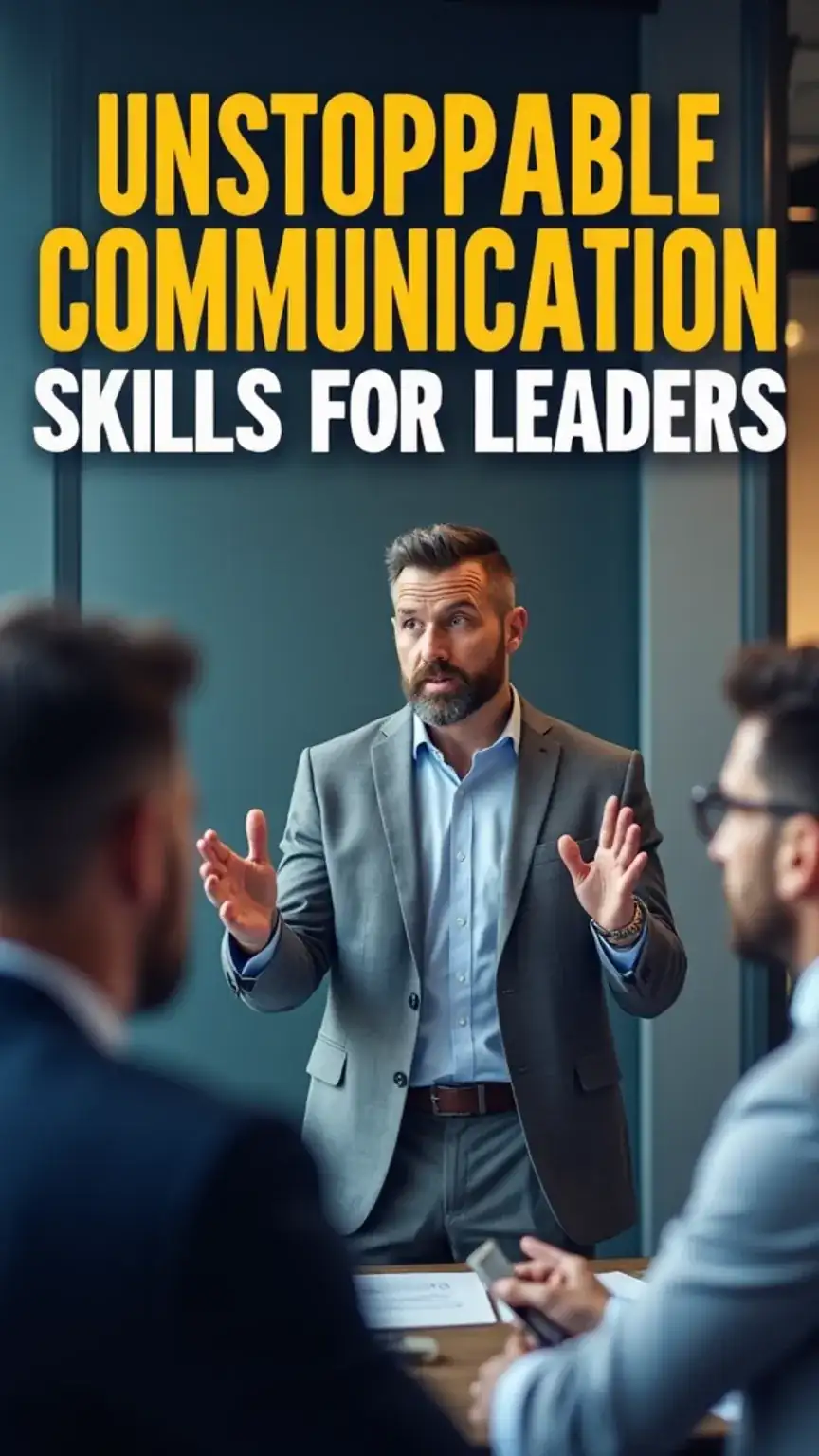Unlock Your Leadership Potential: Mastering Communication Skills That Command Respect
As a guy who’s been there, here’s what I’ve learned: Developing strong communication skills is key to success in leadership and teamwork.

When I think back to my early days as a leader, I realize I was lucky to have been born with decent communication skills. However, as I progressed in my career, I discovered that it’s something that can be developed and honed with practice and dedication. Think of it like mastering a fine Scotch – it’s about appreciating the nuances, refining the palate, and understanding the perfect pour. Similarly, effective communication isn’t just about speaking; it’s about connecting, persuading, and inspiring.
So, if you’re struggling to get your point across or find yourself getting lost in translation, fear not! Many men, even those in leadership positions, grapple with this. It’s a common pain point, and frankly, it can hold you back from reaching your full potential. But with these actionable tips, you’ll be well on your way to developing unstoppable communication skills that resonate.
The Foundation: Understanding Your Audience
Before you even think about opening your mouth, pause.
Step 1: Know Your Audience
This is the bedrock of impactful communication. Who are you speaking to? Are they your seasoned executive team, a room full of junior staff, or perhaps clients with very specific needs?
Understanding their background, their current challenges (their pain points), and what truly matters to them is crucial. Tailoring your message to resonate with their world avoids miscommunication and builds rapport. For example, when explaining a complex financial strategy to engineers, you’ll use different language and focus on different data points than when presenting to the marketing department. This isn’t about dumbing down; it’s about speaking their language.
Crafting Your Message: Clarity is King
Once you understand your audience, the next critical step is to craft your message with precision.
Step 2: Be Clear and Concise
In today’s fast-paced world, attention spans are shorter than ever. Avoid jargon, industry buzzwords, or overly complex language that might confuse your listeners.

Instead, opt for simple, straightforward language that gets your point across efficiently and effectively. Imagine explaining your latest passion project – the one involving your kamado grill – to someone who has no idea about BBQ. You wouldn’t launch into technical terms about heat zones and smoke infusion. You’d talk about the delicious result and the enjoyment of sharing it. Similarly, when communicating leadership directives, focus on the core message and the desired outcome.
Pro Tip: Before important meetings, jot down your key points and practice delivering them aloud. This helps you identify any areas that might be unclear or too wordy. It’s like rehearsing your toast at a wedding – you want it to be smooth and heartfelt.
The Art of Listening: More Than Just Hearing
Communication is a two-way street, and often, the most overlooked aspect is the art of listening.
Step 3: Practice Active Listening
As a leader, it’s not just about talking; it’s about truly hearing what your team members have to say. This means paying attention not only to their words but also to their tone and underlying emotions.

Make sure you’re actively listening, asking clarifying questions, and showing genuine interest. Nodding, maintaining eye contact, and summarizing their points (“So, if I understand correctly, you’re concerned about X because of Y?”) demonstrates that you value their input. This fosters trust and encourages open dialogue. Remember Dave, a 45-year-old accountant who landed his dream client after revamping his LinkedIn profile pic? He actively listened to feedback on his initial unprofessional photo, which was a key turning point.
Ladies, bookmark this for the man in your life who ‘has nothing to wear’ to your anniversary dinner. He might be struggling to communicate his style needs. The same principle applies to him understanding your desire for a thoughtful evening!
Beyond Words: Harnessing Nonverbal Communication
Did you know that a significant portion of your message is conveyed without uttering a single word?
Step 4: Use Nonverbal Cues
Your body language, tone of voice, and facial expressions can communicate just as much information as your verbal communication.

Are you leaning in with open posture, signaling engagement? Or are you slumped over, arms crossed, conveying disinterest? Is your tone confident and approachable, or is it hesitant and dismissive? Make sure you’re aware of your nonverbal cues and use them strategically to reinforce your message. Imagine walking into a room where your confidence precedes you, simply by how you carry yourself. This powerful, unspoken communication can significantly impact how your message is received.
Surprise! 90% of recruiters judge your credibility by your profile pic—here’s how to ace it. This is a prime example of nonverbal cues at play in the professional world. Even a digital representation speaks volumes.
Embracing Growth: The Power of Feedback
Finally, no leader is perfect, and continuous improvement is essential.
Step 5: Be Open to Feedback

It’s perfectly okay to make mistakes – it’s precisely how you learn and grow. Create an environment where your team members feel comfortable speaking up and providing constructive criticism.
When you receive feedback, listen without defensiveness. Thank the person for their input and genuinely consider their perspective. Being willing to make changes based on feedback shows humility and a commitment to improvement, which in turn builds stronger relationships and more effective communication strategies. Your future self will thank you for reading this and taking action.
For example, a leader who actively seeks feedback on their presentation style might discover they tend to speak too quickly. By acknowledging this, they can consciously slow down, making their message much more digestible for everyone involved.
Elevating Your Leadership Through Communication
Developing unstoppable communication skills as a leader is an ongoing journey, not a destination. It requires consistent effort, self-awareness, and a genuine desire to connect with others. By focusing on knowing your audience, being clear and concise, practicing active listening, leveraging nonverbal cues, and embracing feedback, you’re building a powerful toolkit for success.

These skills aren’t just for the boardroom; they translate into every aspect of your life, from family conversations to building strong friendships. Think about how much smoother your interactions would be if you consistently applied these principles. It’s about fostering understanding, building trust, and ultimately, leading with influence and impact.
Remember, effective communication is a superpower for any leader. It allows you to inspire your team, navigate challenges, and achieve collective goals. By investing in these soft skills, you’re investing in your own leadership growth and the success of those around you.
Final Fhoughts
So, there you have it – my top tips for developing unstoppable communication skills as a leader. Remember, it takes practice and dedication, but with these actionable strategies, you’ll be well on your way to becoming a more effective, respected, and influential communicator.
Ready to own your image and elevate your leadership communication? Start by practicing active listening in your next team meeting and share your #CommunicationUpgrade on Pinterest or your favorite socials!
Tag a friend who needs a style intervention… or perhaps a communication intervention! Let’s all strive to communicate with clarity and impact.



